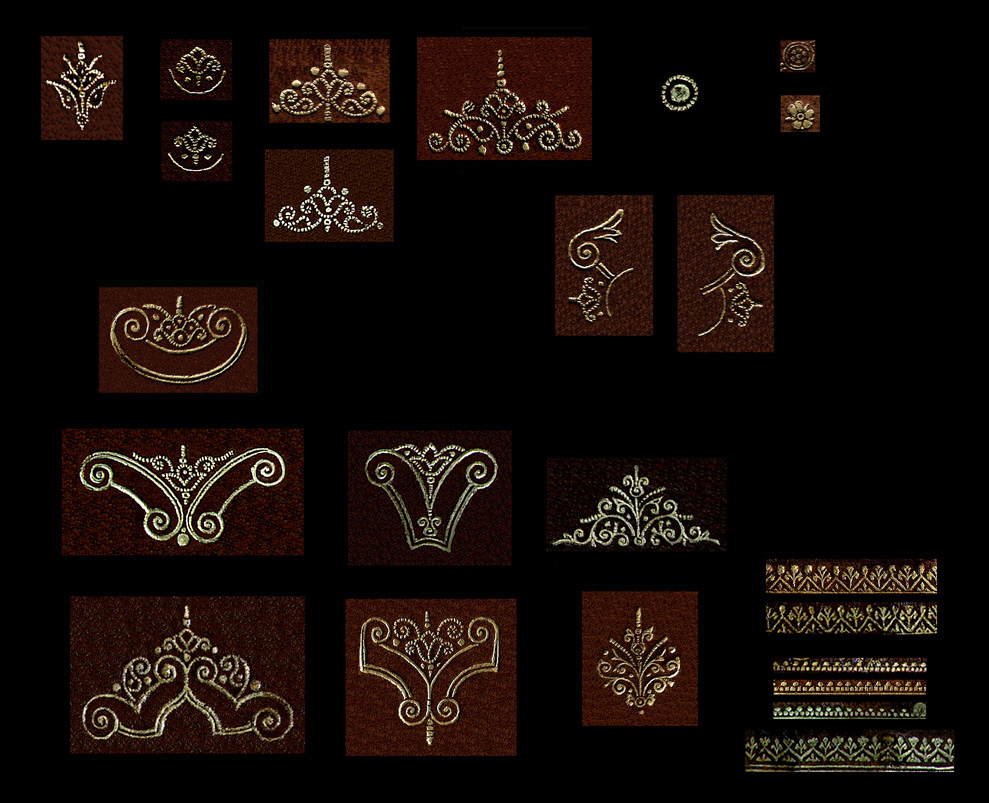

| In the diagram above I have extracted the major imprint examples from the three atelier Charenton examples shown on the previous page. The first an most important observation is the use of multiple fleuron tools, i.e. grouping a number of pointillé motifs in one tool. A similar technique can be seen in the atelier des Caumartin tools, however from a perhaps later date. These multiple fleuron tools yield a more perfectioned appearance to the work, which in fact is less laborious than the work accomplished in the preceding decades. Here we see 5 tools doing the work of twenty. The next important observation is that stylistically, these fleurons look very familiar, they appear in fact to be close copies of tools used by Antoine Ruette as well as those of the atelier des Caumartin |
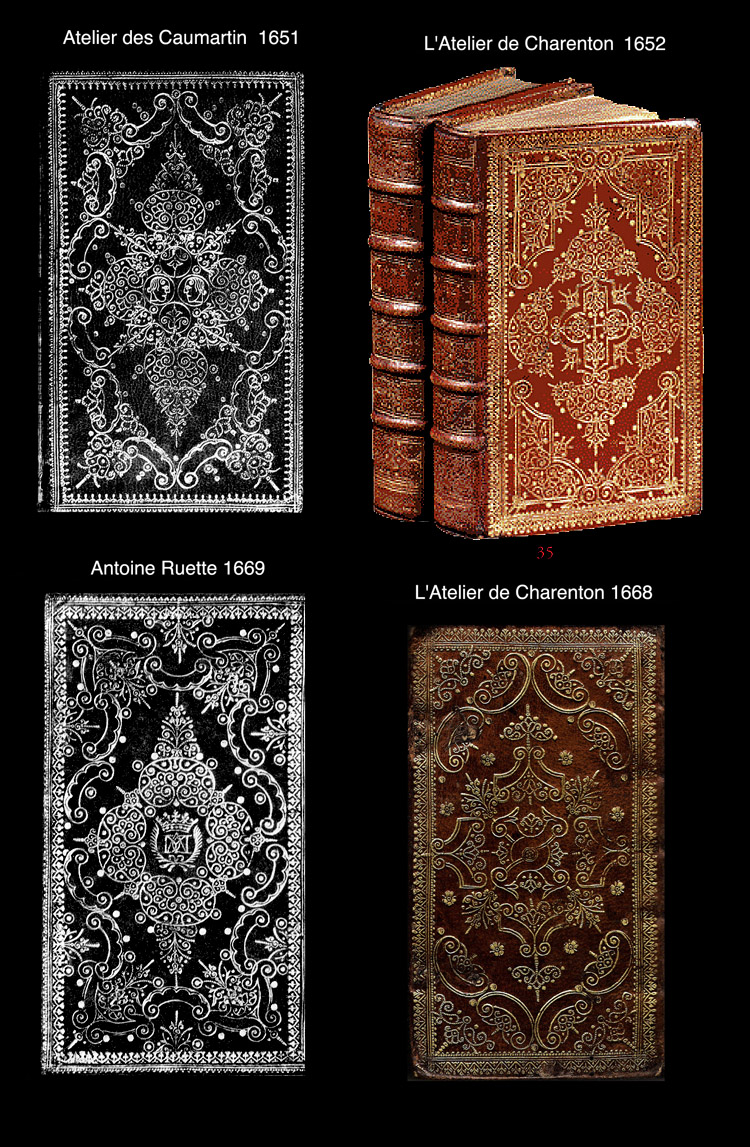
| In Comparative Diagram 2, I have reproduced 4 bindings, to show the similarities in the styles and tools. The Charenton binding at the upper right is from an auction catalogue and the image is not high resolution, however it is still useful in as much as we can recognize some of the tools shown in Comparative Diagram 1, also the general layout of the tooling appears to have much in common with the Caumartin binding which may be of the same period. Notice the mention of L'ATELIER DE CHARENTON in the auction details for this item (35) shown below |
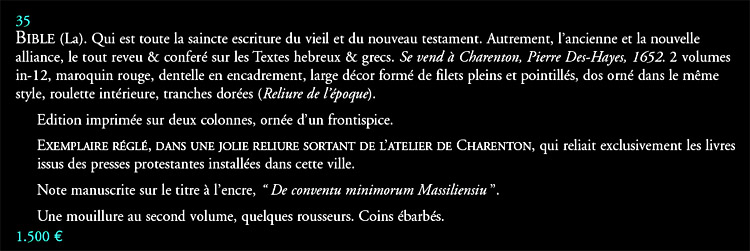
| I would like to present another example that is presently for sale on the internet, available from: Bromer Booksellers, Inc. |
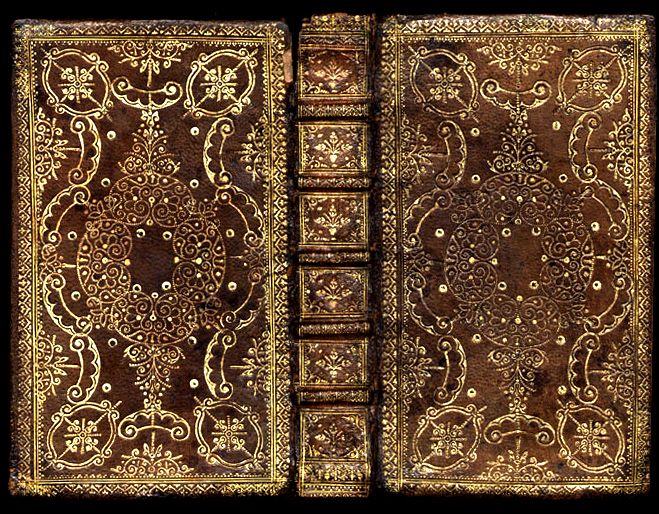
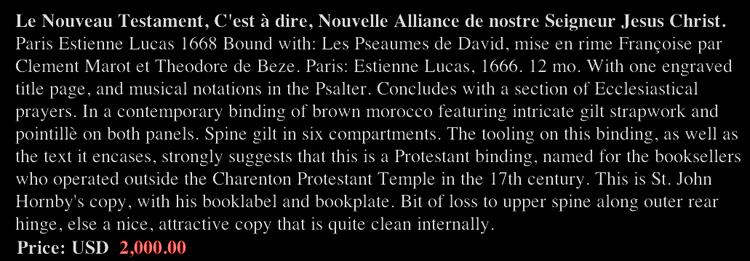
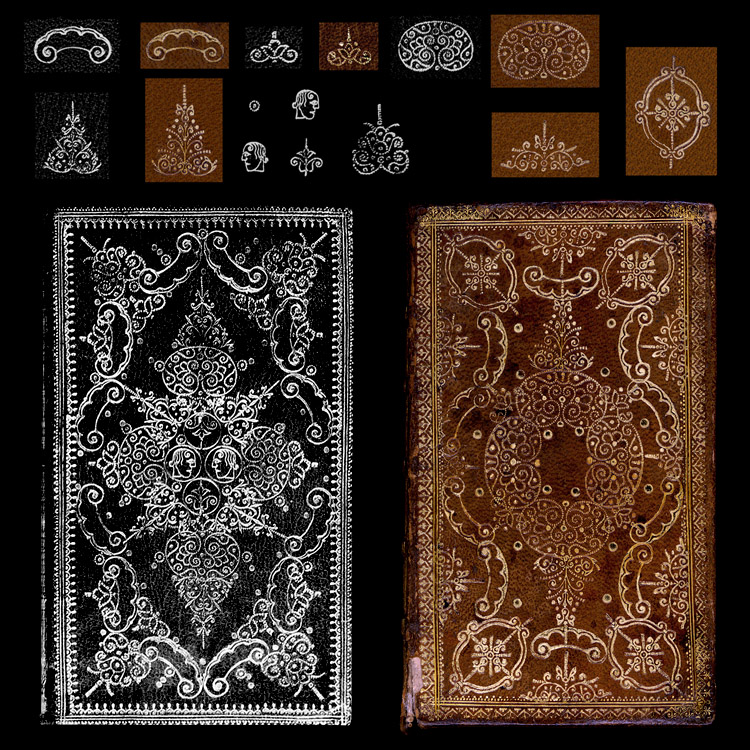
|
Philip C. Salmon, the Manager of Bromer Booksellers, Inc. was good enough to send me a 300 dpi scan of this binding, which has a number of important comparative features with the bindings shown above. In Comparative Diagram 3, I have extracted the imprints from Esmerian's first Caumartin example (Tableau VII, 1972), which he dates as 1651. It is important to note the Esmerian is not likely to be too far wrong on this date as he had himself a number of atelier des Caumartin bindings. The "Petite Tête" that is found on this particular example was an item of great speculation and well researched by a number of bibliophiles, Esmerian lists six Caumartin "Petite Tête" examples which he has estimated to have been executed from 1651 to 1652! If now we compare this Charenton example, which must be later than 1668, i.e. two decades later, the parallels in style and motif seem rather remarkable. On the next page we compare this same Charenton binding with the 1669 binding of Antoine Ruette (shown above), here we find important discovery. See the next page L'ATELIER DE CHARENTON - Ruette tools Return to the previous page RELIURE DE L'ATELIER DE CHARENTON |
| Go to Digital Alchemy | Click on this link to visit cyclopaedia.org |